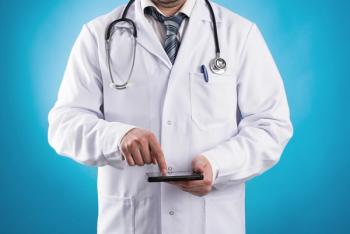
- Oncology Vol 29 No 4_Suppl_1
- Volume 29
- Issue 4_Suppl_1
(P001) Disparities in the Local Management of Breast Cancer in the United States According to Health Insurance Status
Patients with inadequate health insurance were more likely to receive mastectomy, omit RT following breast-conserving surgery, and receive PMRT. Differences in clinical presentation and demographics according to insurance status incompletely explain the variation in therapy. Further study is needed to validate and address these disparities and to evaluate the impact of health insurance legislative efforts in localized breast cancer.
Thomas M. Churilla, MD, Brian Egleston, PhD, Joshua Meyer, MD, Yanqun Dong, MD, PhD, Penny Anderson, MD; Fox Chase Cancer Center
INTRODUCTION: Various studies have suggested disparities in breast cancer care due to inadequate health insurance coverage. The purpose of our study was to test for associations between patient insurance status and the presentation and local therapy patterns among a large, nationally representative cohort of patients with localized breast cancer.
METHODS: We queried the National Cancer Institute (NCI) Survival, Epidemiology, and End Results (SEER) database for breast cancer cases diagnosed from 2007–2011 in women aged 18–64 years, limited to ductal or lobular histology, nonmetastatic stage, and treated with mastectomy or lumpectomy. Patients ≥ 65 years were excluded based on their eligibility for Medicare. We characterized clinical and demographic variables according to insurance status (insured vs Medicaid vs uninsured). We tested for associations between patient insurance status and choice of definitive surgical procedure (mastectomy vs breast-conserving surgery), omission of radiation therapy (RT) following breast-conserving surgery, and administration of postmastectomy RT (PMRT). We calculated odds ratios (ORs), performed Pearson’s chi-square test for univariable analysis, and used multiple logistic regression analysis to adjust for clinical and demographic covariates.
RESULTS: A total of 129,565 patients with localized breast cancer were analyzed. The health insurance statuses included insured (84.5%), Medicaid (11.5%), uninsured (2.1%), and unknown (1.9%). Patients with Medicaid or uninsured status were more likely to present with large, node-positive tumors and be black or unmarried and reside in low-income counties. The breast-conserving surgery rate was 51.3% among all patients and varied according to insurance status: insured (52.2%), uninsured (47.7%), and Medicaid (45.2%) (P < .001). Medicaid insurance status remained significantly associated with receipt of mastectomy in the multivariable analysis (OR =1.07; 95% confidence interval [CI], 1.03–1.11; P < .001). Radiation therapy was more frequently omitted after breast-conserving surgery in both Medicaid (OR = 1.14; 95% CI, 1.07–1.21) and uninsured (OR = 1.29; 95% CI, 1.14–1.47) patients in the multivariable analysis (P < .001 for both). PMRT was more frequently administered among Medicaid and uninsured patients; however, only Medicaid status remained significantly associated with PMRT in the multivariable analysis (OR = 1.10; 95% CI, 1.04–1.18; P = .002).
CONCLUSION: Patients with inadequate health insurance were more likely to receive mastectomy, omit RT following breast-conserving surgery, and receive PMRT. Differences in clinical presentation and demographics according to insurance status incompletely explain the variation in therapy. Further study is needed to validate and address these disparities and to evaluate the impact of health insurance legislative efforts in localized breast cancer.
Proceedings of the 97th Annual Meeting of the American Radium Society -
Articles in this issue
Newsletter
Stay up to date on recent advances in the multidisciplinary approach to cancer.

















































































